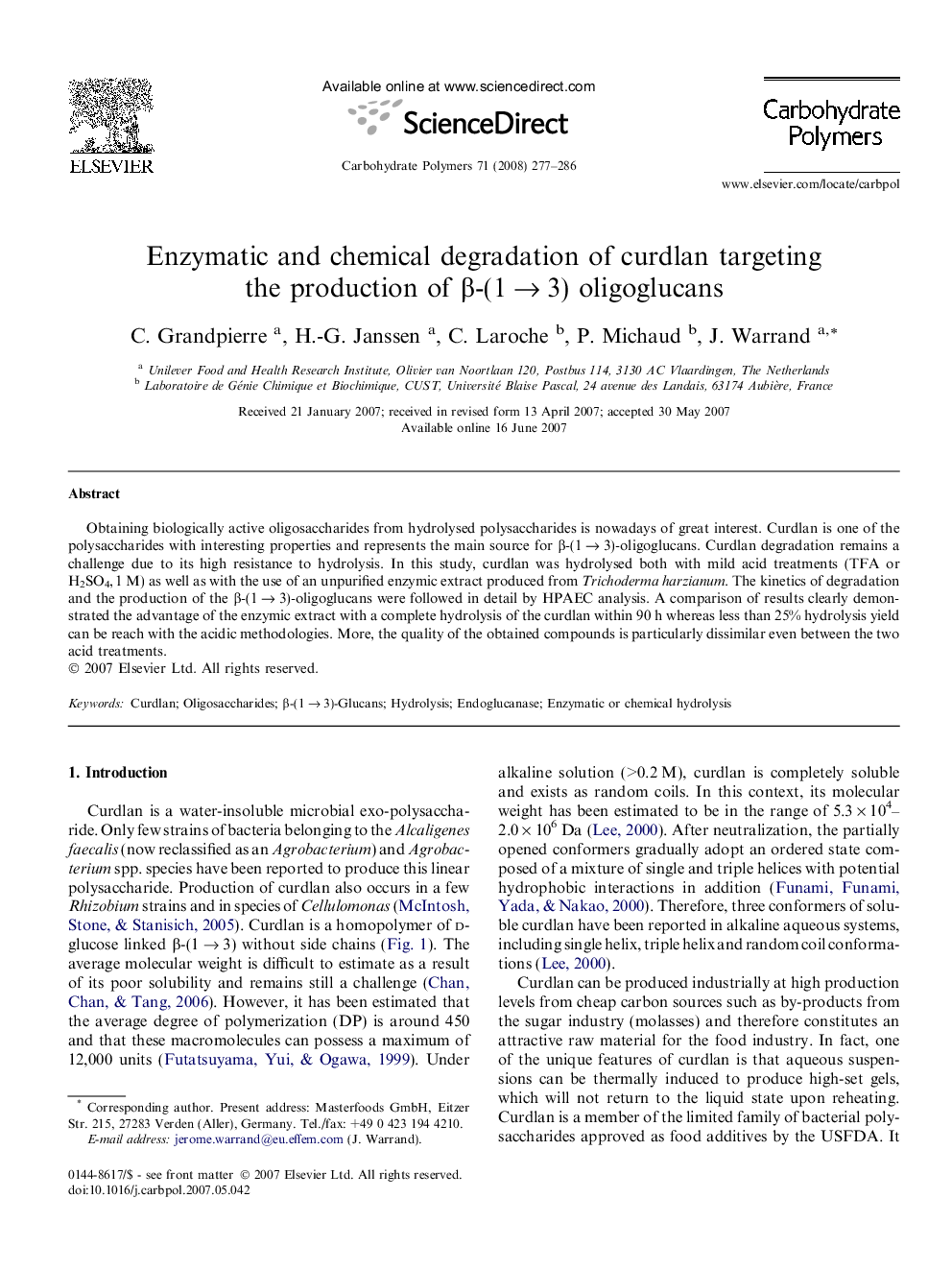| Article ID | Journal | Published Year | Pages | File Type |
|---|---|---|---|---|
| 1379841 | Carbohydrate Polymers | 2008 | 10 Pages |
Obtaining biologically active oligosaccharides from hydrolysed polysaccharides is nowadays of great interest. Curdlan is one of the polysaccharides with interesting properties and represents the main source for β-(1 → 3)-oligoglucans. Curdlan degradation remains a challenge due to its high resistance to hydrolysis. In this study, curdlan was hydrolysed both with mild acid treatments (TFA or H2SO4, 1 M) as well as with the use of an unpurified enzymic extract produced from Trichoderma harzianum. The kinetics of degradation and the production of the β-(1 → 3)-oligoglucans were followed in detail by HPAEC analysis. A comparison of results clearly demonstrated the advantage of the enzymic extract with a complete hydrolysis of the curdlan within 90 h whereas less than 25% hydrolysis yield can be reach with the acidic methodologies. More, the quality of the obtained compounds is particularly dissimilar even between the two acid treatments.
